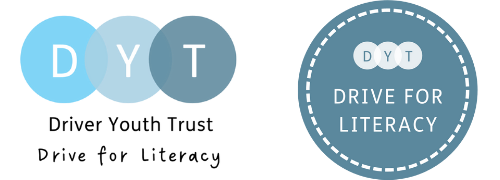Systems to screen learners for emerging literacy skills in Secondary School – are they effective?
8/11/2017
DYT Consultant Teacher Emma Green examines the effectiveness of current screening systems and how these influence our understanding of literacy skills in learners.

Part 1 – Definition & Boosters
At a time when a majority of secondary schools have converted to academy status (61% in May 2016) and local authority services are difficult to access, the identification of SEND is ever more complex. Schools are left with the choice of paying large sums to hire a specialist assessor to assess for specific difficulties or make use of in-school resources to identify need. This two-part blog series will examine the effectiveness of current systems and how these influence our understanding of literacy skills in learners.
Emerging Literacy
Literacy difficulties is a value-laden term. Firstly, our understanding of literacy and what this encompasses needs a definition and secondly, we must ask should we use the term ‘difficulties’ with the negative connotations it holds?
Historically, conditions such as dyslexia have been categorised under ‘Specific Learning Difficulties’. This category also includes dyscalculia, dyspraxia, dysgraphia and sometimes ASD and ADHD. Definitions for the term Specific Learning Difficulties centre around ‘‘unexpected’ problems that some children experience in the academic arena’ (Snowling, 2005) or ‘unevenness in a student’s ability to learn’ (Bevan, 2010).
A problem with the term Specific Learning Difficulties then is the way it can be linked with a discrepancy definition of dyslexia which focuses on learners who attain highly in other academic measures. In addition, such diagnostic assessments are costly1.
Instead, the term literacy difficulties is used because this includes the broad range of young people who experience a barrier to developing age-appropriate literacy skills which is indeed likely to lead to a host of difficulties at school. However, a preferable term is emerging literacy; this changes the perception of struggling with reading and writing by acknowledging it is a developmental stage which the learner has not (yet) reached … but they may, with appropriate, high quality teaching.
Emerging Literacy or Dyslexia – what’s the difference?
There is no internationally agreed definition of dyslexia. However, at DYT we tend to adopt the definition proposed in the Rose Report:
‘Dyslexia is a learning difficulty that primarily affects the skills involved in accurate and fluent word reading and spelling. Characteristic features of dyslexia are difficulties in phonological awareness, verbal memory and verbal processing speed.’
(Rose, 2009)
Whilst most would agree that difficulties in developing ‘accurate and fluent word reading and spelling’ skills do constitute a literacy difficulty, the reasons for this lack of development may vary between individuals. The real question then, is does it make a difference? In terms of the actions that might be taken by a school, generally the answer is no, it doesn’t.
Boosters
Secondary schools are judged on the effectiveness of their literacy provision. The School Inspection handbook (Ofsted, 2017) states that inspectors should ‘consider the extent to which the school intervenes to provide support for improving pupils’ literacy, especially for pupils at risk of underachieving.’
Many schools now assess their learners’ reading and/or spelling skills on an annual basis. Some secondary schools discontinue annual assessment as learners achieve an age-appropriate score, some only assess at KS3 and some for one or other of these skills.
Driver Youth Trust encourages schools to assess learners for reading and spelling regularly, whether through formative or summative approaches, to ensure staff awareness of learners’ reading and spelling competence. Summative approaches tend to be easier to administer and may identify more accurately learners who need targeted provision. A range of assessments are currently on the market and the next part of my blog will analyse what these screening processes are, and whether they are making an impact on effective support for learners with emerging literacy.
References
http://www.bbc.co.uk/news/education-13274090
https://www.gov.uk/government/publications/number-of-secondary-schools-and-their-size-in-student-numbers
https://www.nessy.com/uk/product/dyslexia-screening/
https://www.gl-assessment.co.uk/media/182327/dyslexia-dyscalculia-guide-2017-ip.pdf
DfE/DoH (2015) Special educational needs and disability code of practice: 0 to 25 years, DfE, London
NASEN (2014) SEN Support and the Graduated Approach, NASEN, Staffordshire
Ofsted (2017) School inspection handbook, Ofsted, Manchester
Patoss (2010) Specific Learning Difficulties, Patoss Ltd, Worcestershire
Snowling, M. (2005) ‘Specific Learning Difficulties’, Psychiatry, 4(9), pp.110-113
